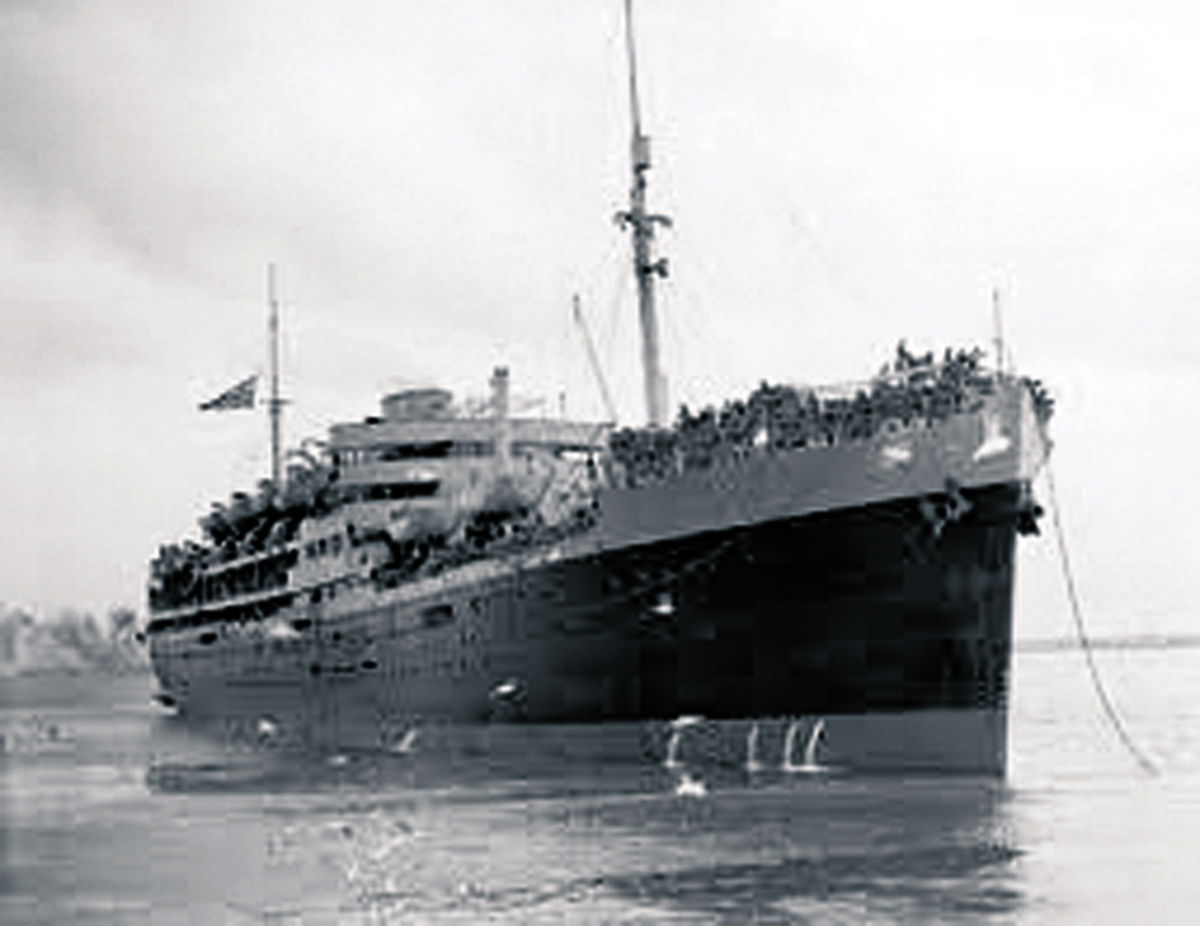Dunera's impact on Hay
Kimberly Grabham
18 November 2024, 4:00 AM

The Dunera Boys were brought to Australia on the HMT Dunera, and had an appalling 57-day journey to Australia.
There was massive overcrowding, and poor treatment. Upon arrival in Australia, an Australian doctor examined the internees.
He discovered that the Dunera Boys were not parachutists and enemy soldiers, as reported.
The doctor’s report led to the court marshal of several British Guards.
It is fascinating to look back and truly understand what is now history, meant so many different and important things to the town of Hay.
In this reflection piece, it is clear that the Dunera Camp and internees impacted the town of Hay in many ways.
This amazing, thought provoking and thoughtful commentary on the closure of the Dunera camps was titled Some Reflections, written by ‘A.J.T.’ From The Riverine Grazier, on November 1, 1946.
“The days of the Hay POW camp are numbered, and the old camp is already in the process of demolition.
“The camp has for so long been an integral part of our lives that its passing leaves a feeling of regret and a void.
Hay’s military appearance has now almost disappeared.
“The numbers of soldiers in the streets, the incessant hurrying in the street of military trucks, ambulance wagons and Jeeps; the band and parades, the glare of the camp lights visible at night from a distance of twenty miles. These things are now history.
“Hay has been a “war lucky” town in securing the Internment Camp and the munitions factory.
The camp, particularly, has been a great financial asset to Hay and many an organisation holding functions on “pay day” to ensnare the unwary soldier.
“Looking back to when the camp was being constructed, we remember the urgency and hurry.
For the British Empire 1940 was grim, with only bad news of defeats.
“At night the railway yards responded to the clank of shunting trucks and the dull thud of heavy girders being unloaded.
"A forest of pine posts sprang up overnight to be interlaced with barbed wire. Huts were laid down in dozens.
“The air rang with the sound of a hundred hammers and the huts soon took shape to fill. Roads were made and water and electric light connected in record time.
The Commonwealth Bank was open until late for the convenience of workmen, and Hay was in the midst of a boom.
“The camp was open for public inspection on the Sunday before the first occupants arrived, and a large crowd took the opportunity of looking over the buildings.
"Many people witnessed the arrival of the in ternees – a bedraggled lot, who had suffered a bad voyage out, losing most of their luggage and belongings.
“One pathetic figure, looking at the people, asked “Is this ‘home’ at last?” He soon found out what a good home the camp was.
"The internees soon picked up in spirit and condition, and many were seen to be enjoying themselves at the river beaches under the eye of an armed guard.
“Among the internees were some very fine singers and many people used to wander to wards the camp to listen to their combined singing. The Italian POW’s replaced the intern ees and later the Japanese prisoners occupied the camps.
“We had a few moments when the Japs were here. Everyone remembers the threat of a mass escape and many people were ordered from West Hay as a precaution.
“After the Japs left, the Italians returned to Camps 7 and 8. Finally No 8 was the only compound in use until the camp virtually closed on Monday 28 October 1946.
“There are some features associated with the Hay Camp of which we can be proud.
"Under the command of Colonel C E Thane, the camp was one of the finest camps in Australia.
"During its long career of over six years, only one prisoner escaped, and he a confirmed escapee adapt of the art.
"He scaled the wall at the detention barracks at the old Gaol.
“What is praiseworthy is that comparatively few felt the desire to try. It is said that all the occupants, internees, Italian and Japanese prisoners, spoke highly of their treatment by the Australian soldiers.
Surely in this and in other lands when the story of the war is written, such things will make a bright and lasting picture in an evil and terrible war.
“It is interesting that the spot where the camp stands has been in turn a cattle camp; Later it was an aerodrome, and it has been a prisoner-of-war and internment camp, and so it has witnessed the changing years.
“What the future holds for it is not known, but it is our earnest hope that never again will it be a place where men are caged up for years on end, but that the ‘Brotherhood of Man’ will become a reality and wars will no longer de face God’s fair world."
After the Dunera Boys were released, less than half remained in Australia, others emigrating to England and America, ‘the land of opportunity.’
Highly intelligent, the Dunera Boys went on to hold varied and successful careers, and accomplish amazing things.